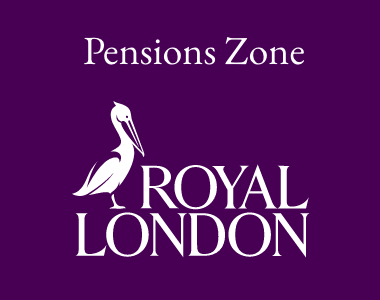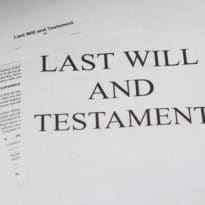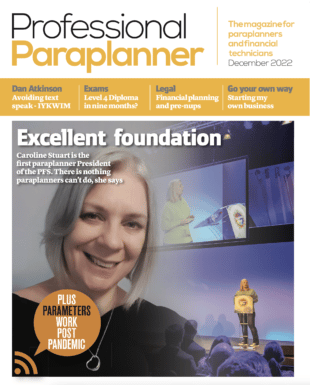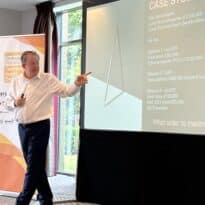As clients seek to reduce their IHT liability post April 2027, gifts from surplus income could feature highly in financial plans. David Downie, Technical Manager, Aberdeen, considers the implications and chances of success in using this tax tactic.
With pensions set to be included in the estate from April 2027, HMRC are no doubt bracing themselves for a surge in IHT normal expenditure of income exemption claims.
There is a possibility of a double tax charge on pension death benefits paid after age 75 with both IHT and income tax on the beneficiary payable. Understandably some clients concerned about a combined tax charge of potentially up to 67% are open to paying some income tax on pension withdrawals in order to save IHT by gifting the withdrawals and removing them from the estate.
This approach may create surplus income which if given away as a series of regular gifts could be immediately free of IHT without the usual seven year wait. For the normal expenditure out of income exemption to apply the gifts must:
- form part of normal expenditure
- be made from income
- leave the donor with sufficient income to maintain their usual standard of living
Whilst the exemption may be an extremely valuable estate planning tool it is important to remember that the exemption is typically claimed on death and not at the time the gift is made. There are no guarantees that HMRC will accept that all the conditions have been met.
A good understanding of how these three conditions fit a clients’ circumstances is essential. The following 10 points may help ensure the exemption can be successfully claimed.
- When is a gift regarded as ‘normal’ expenditure?
Gifts will usually be made in cash and must form part of a habitual pattern of gifting. Typically, HMRC will look at a history of say three or four years to establish a regular pattern. Sometimes a shorter period may be accepted where it can be shown that the donor had made a commitment to future gifting, such as paying the premiums on a life policy or setting up a standing order.
- What is included as income?
Gifts must normally be made from current net income received in a tax year (spendable income after income tax has been deducted) and not capital. Income for the purposes of the exemption is not the same taxable income.
It is broadly income received after tax from employment or pension, the natural yield from investments such as interest or dividends and rental income. It also includes the natural income from ISAs if the taxpayer actually receives the distribution rather than accumulating it within their ISA.
- Can pension tax-free cash be included in income?
Pension drawdown withdrawals, including any tax-free cash element, are also treated as income for this purpose. Of course, they will still need to satisfy the other conditions of the exemption to qualify. For example, stripping out all the tax-free cash and gifting it over a couple of tax years would typically fail to establish a regular pattern of gifting. The withdrawals would not look like income. However, spreading withdrawals over a longer period is more likely to satisfy the exemption.
- Can accumulated income be included?
Generally, income which is reinvested into other investments will be deemed to have been capitalised. This includes income automatically reinvested if an individual holds ‘accumulation’ units. It does not matter that the accumulated income is taxable in the year it is received.
Although ‘income’ will usually be income received in a tax year, it is possible to carry income over from a previous year if it has not been capitalised, for example income received and kept in the donor’s bank account. However, HMRC will generally deem that it has been capitalised if left in the bank account for more than two years.
- Can income be transferred between spouses for joint gifts?
The UK has independent taxation, so where joint gifts are made, each spouse will be assessed separately and their surplus income determined. A surplus can’t be determined using total household income.
Where spouses or civil partners have different levels of income, for the purposes of the exemption HMRC will generally not accept a transfer of income from the high earner to the low earner to increase the latter’s surplus.
Where this is the case, it may be beneficial to consider each spouse making separate rather than joint gifts. This may allow the higher earner to make larger regular gifts as they will have a larger surplus.
- What is surplus income?
Gifts must be made from surplus income. This is simply the amount by which an individual’s income exceeds their usual spending each year. Making a gift from income that is truly surplus should not affect the donor’s usual standard of living.
If they have to resort to capital to maintain their lifestyle this is an indication that the surplus is insufficient to cover the gift, and the exemption may be lost or limited. Having calculated income, normal living expenses must be identified to arrive at the surplus.
- What is included in normal living expenses?
These include costs of subsistence, such as mortgages, heating and electric bills, council tax and insurances plus those additional costs relating to standard of living, including travel costs, regular holidays and club memberships.
Although not exhaustive, the HMRC form IHT403 lists the main items of expenditure that should be considered. Where a larger one-off cost arises, it could be argued that these don’t count as ‘normal’ and therefore not count in the list of expenses (and so don’t reduce a surplus). for example, home improvements such as a new kitchen.
Similarly, the purchase of a new car around every 10 years may also be excluded, but the costs of a lease car or one purchased on a monthly contract is likely to be regarded as a normal living expense. There are no guarantees, and treatment will depend on individual circumstances.
- Can household expenses be allocated between spouses?
As with income, one spouse or civil partner may have more expenditure than the other. However, household expenses such as council tax and heating will normally be regarded as being shared equally. While the actual payment may be made by the higher earner, this does not affect the allocation of the expense for the exemption which is likely to be split equally. Other expenses clearly attributable to one partner do not have to be split, for example the costs of a hobby or a gym club membership.
- Do gifts have to be reported?
Gifts do not have to be reported to HMRC at the time they are made. The exemption is claimed on death and planning the deceased was relying on could be denied by HMRC.
The exception to this is for regular gifts into a discretionary trust. These will need reporting if in the absence of the exemption the gift would result in a 20% tax charge. Therefore, an IHT100 will need to be completed if the gifts when added to any other chargeable lifetime transfers in the preceding seven years exceed the nil rate band.
HMRC will then notify the donor of their decision on the claim for NEOOI. If they accept the claim, then no tax will be payable on the regular gifts. If the claim is rejected tax may become due immediately.
- How is the exemption claimed?
The exemption is typically claimed by the executors following the death of the donor. They will need to send detailed records of gifts made and income and expenditure details for the seven years prior to death on form IHT403.
Thorough record keeping during the donor’s lifetime is essential to help the executors make a successful claim. Trying to retrospectively reconcile seven years’ worth of income, spending and gifting can be challenging for executors. This can mean the planning is only as good as the record keeping.
Summary
Pushing the boundaries of what is included in income and expenditure to arrive at a surplus will leave clients more at risk of a claim being rejected by HMRC, either fully or partially. Any part of a claim that is turned down will be treated as a failed PET and taxed accordingly.
Main image: ben-white-vJz7tkHncFk-unsplash






























